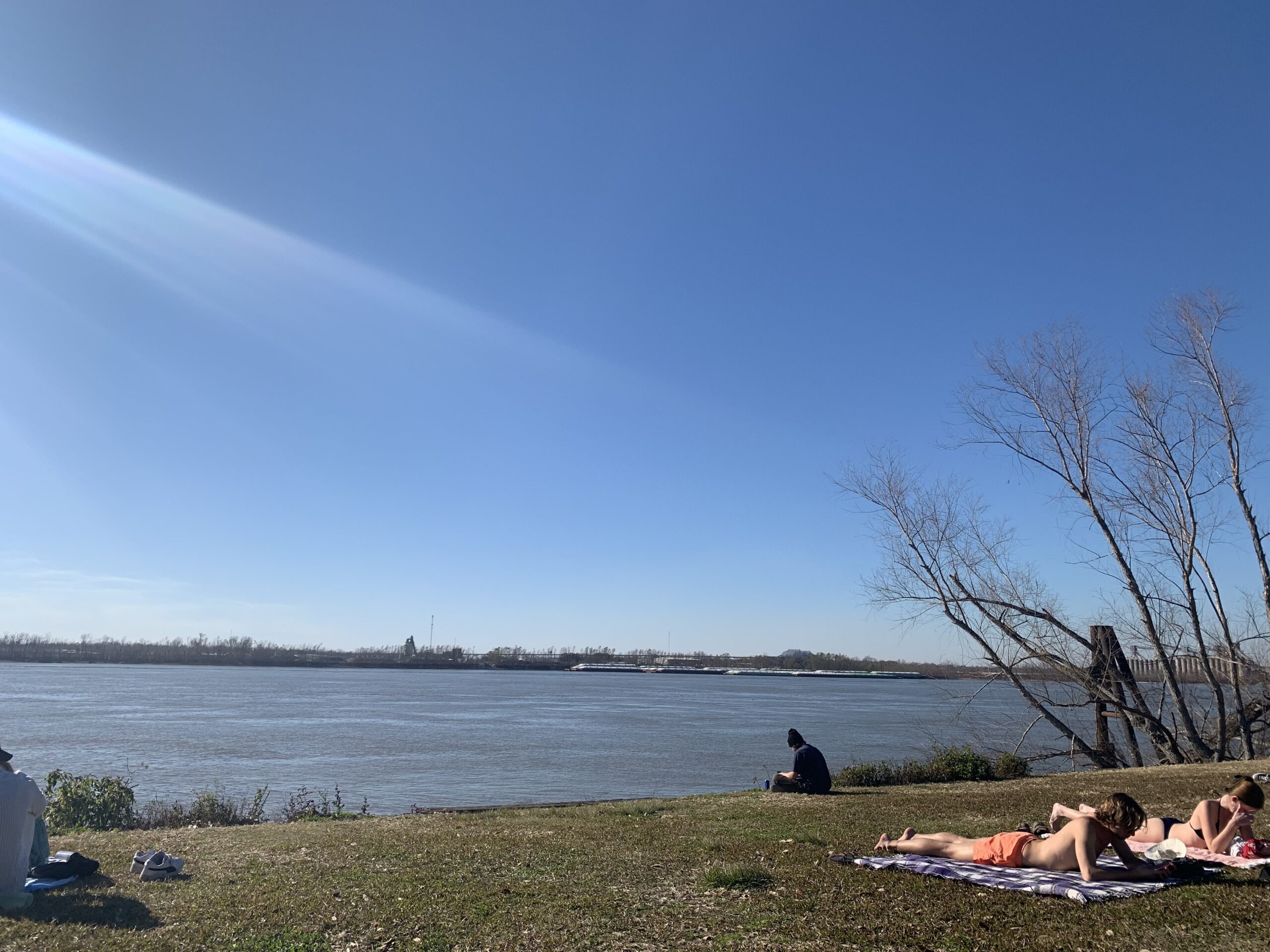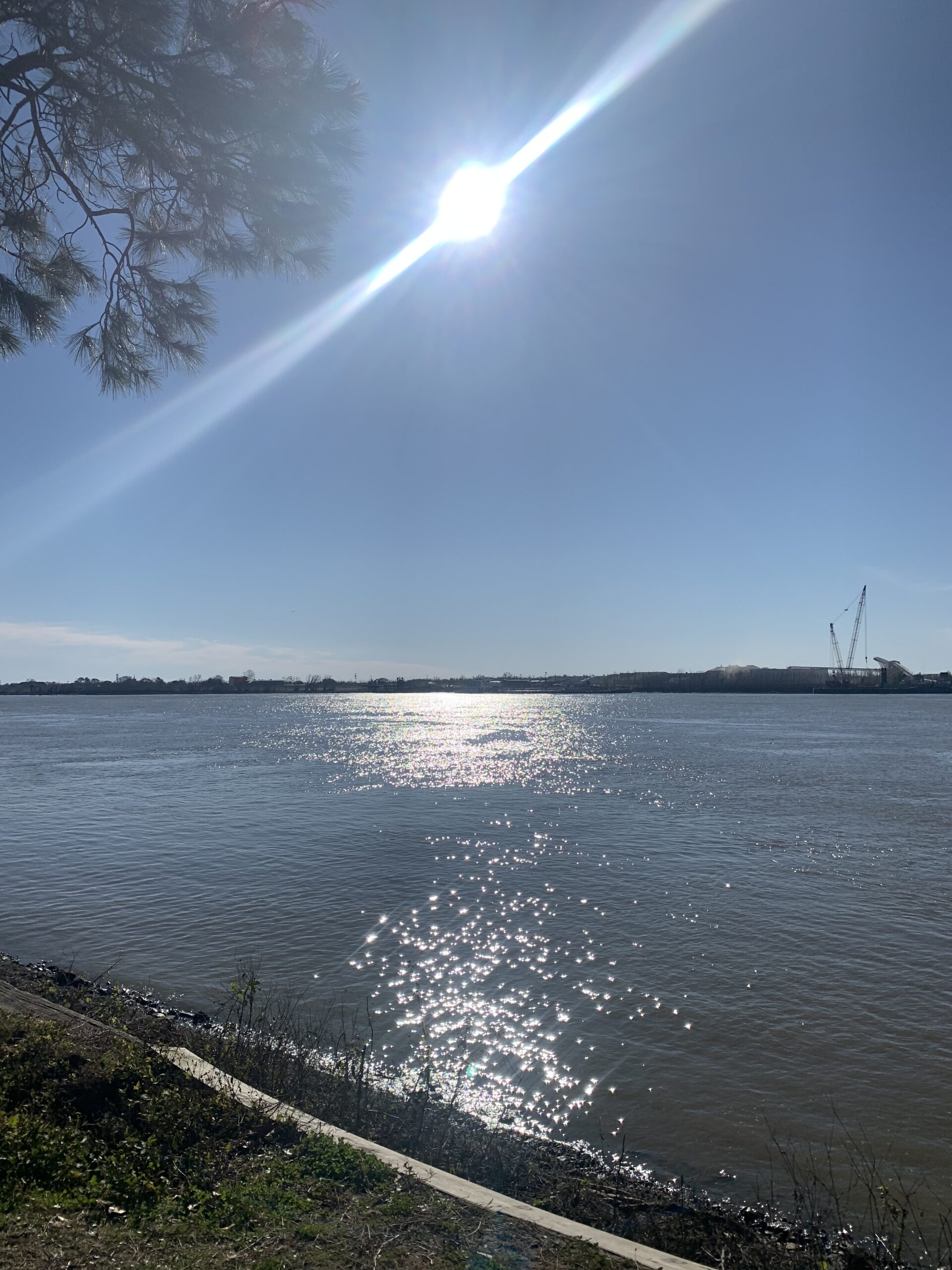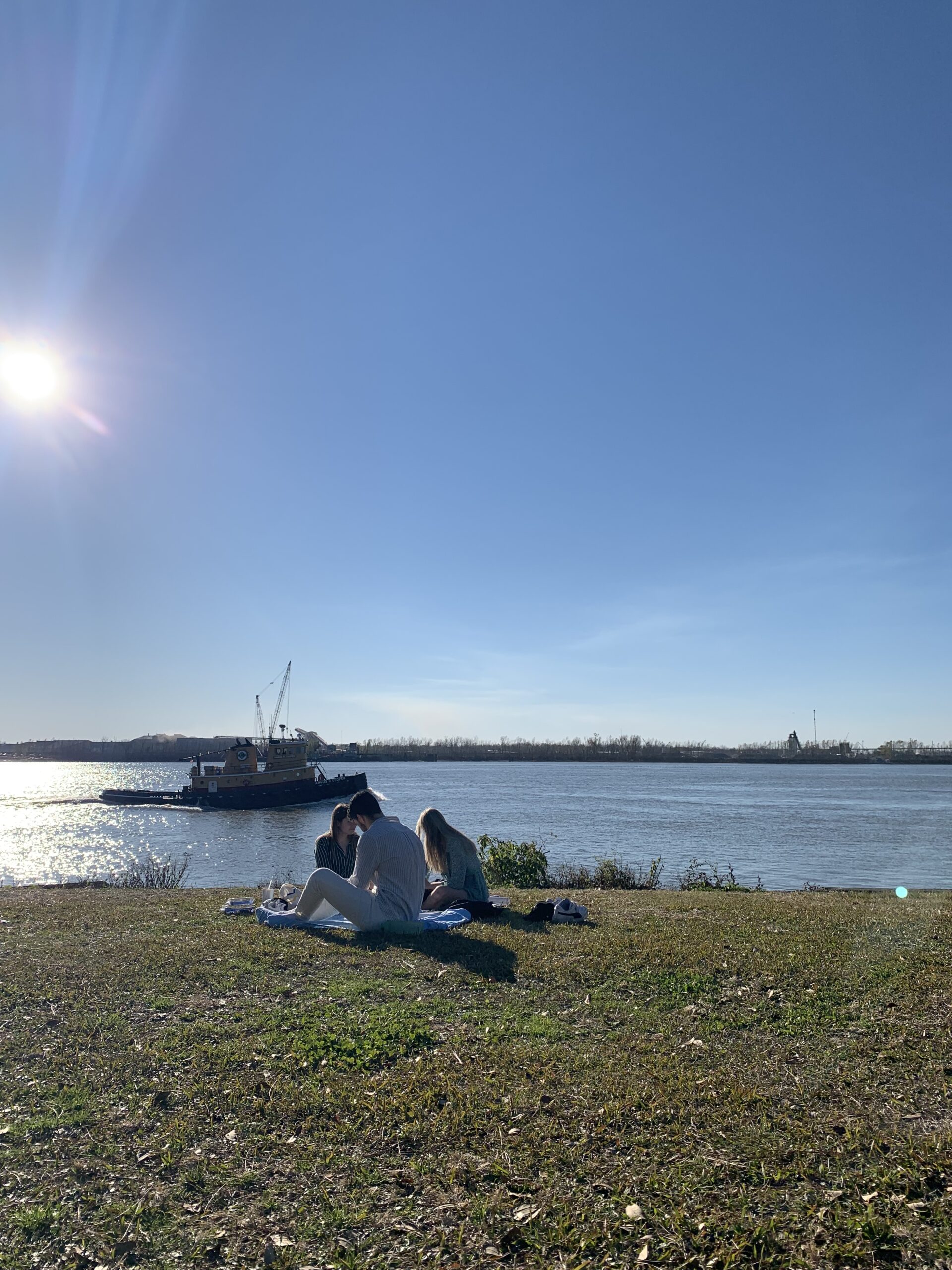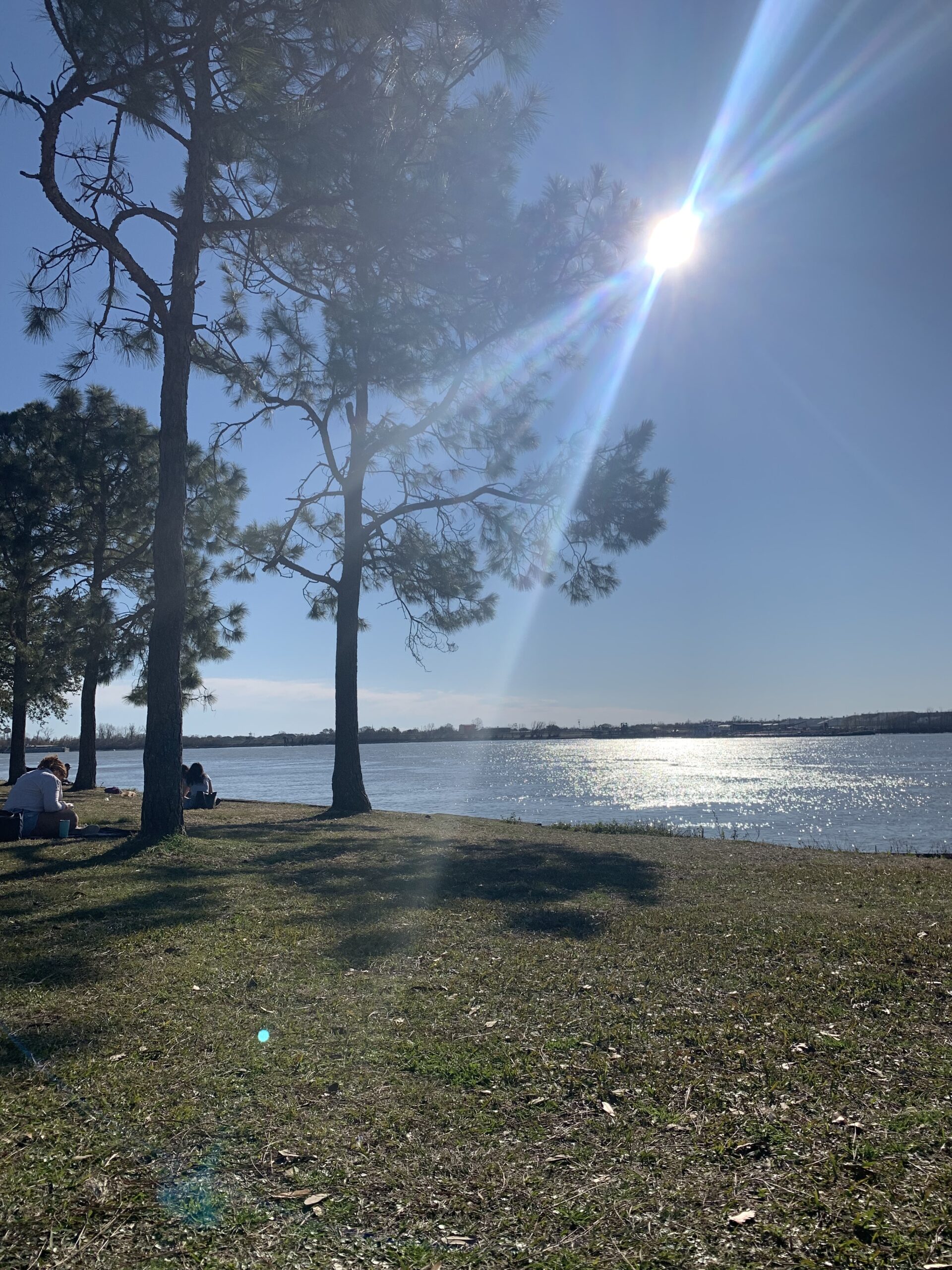
Beautiful view of the Mississippi River from The Fly (Photo by: Maddie Mancuso)
Do you ever wonder why people can’t resist a cup of hot chocolate? Two reasons can explain this attraction. Chocolate and warmth. The Mayans were the first indigenous group to consume chocolate in beverages that were used for medicinal, ritual, and celebration purposes. Chocolate is a good antioxidant known to be one of the best foods to increase endorphins, making us happier. A study done in 2008 by Lawrence Williams in a carefully done experiment showed that people who held something warm while talking to another person were more likely to perceive that other person as emotionally “warm,” and they were more likely to behave in a friendly way. Although hot chocolate can create a distinct emotion or physical comfort that many of us can understand, a person does not always have to drink hot chocolate to experience that feeling.
Hygge (Hyoo-guh) is a cultural practice used to combat seasonal depression during the Danish winter months. This practice is associated with specific rituals such as lighting candles, sitting by a fire, curling up in a blanket with a good book, and self-reflection to create ‘coziness and warmth’ within a home. Creating the ideal space within a home through Hygge alleviates stress, evokes peace, optimism, and compassion. But Hygge doesn’t always have to involve candles and cozy fires. Sitting on the edge of the Mississippi River, Audubon Riverview Park, better known to locals and college students as “The Fly,” has been a popular outdoor gathering place since 2001. When thinking about all the places in New Orleans that could evoke this Scandinavian practice, The Fly is the first place that comes to mind.
Water is the most essential resource for human survival and has played a significant role in human evolution. The earliest known civilizations lived near rivers—the Mesopotamians inhabited near the Tigris and the Ancient Egyptians along the Nile. The steady supply of drinking water, the fertile soil, and the transportation of goods allowed these civilizations to survive. As domestic and agricultural practices evolved, the importance of location to water stayed the same. Advancement in agriculture established settlements, towns, and cities. This evolutionary change allowed people to focus on more than just their basic needs like food, water, and shelter. Having those basic needs met created security. Water played an essential role in human evolution by making people feel secure, which allowed humans to invest in other aspects of modern life such as political, economic, religious, and cultural practices.

Although the glistening water may seem calm, the Mississippi River has a strong undercurrent. (Photo by: Maddie Mancuso)
Feeling the natural breeze, hearing sounds of the water hitting the shore, and the honking of the tugboats is The Fly. The water’s calm surface can be misleading because of the river’s dangerous undercurrent. It is very likely you will see tugboats, barges, and cargo ships pass by The Fly. The massive barges that float along the Mississippi carry large shipping containers of all different sizes. Each shipping container has words spray-painted on the sides in different languages. Every ship that carries goods has a flag on the front of their boat, indicating where they are from and how far they’ve traveled. From the perspective of a person on land, the large cargo ships move slowly. But the cargo ships are moving at an incredible pace carrying tons of weight on their backs. These massive carriers float silently by.
The Port of New Orleans was first established in 1717 when France owned Louisiana. It was a major export of tobacco, indigo, rice, and cotton. Steamboats, barges, cargo, and cruise ships still use the port today. The Port of New Orleans is the fourth-largest port in the United States, with more than 230,000 barges passing through each year. The river reaches 191 feet deep in the French Quarter, the maximum depth of the entire Mississippi River. According to the LSU Economics & Policy Research Group, The Port of New Orleans has created 19,050 jobs annually and $3.9 billion of economic output. Being the only international port in Louisiana, many raw materials and other goods used in the state come through here. The port brings in many goods such as oil, cars, coffee, and steel. As a result, the Mississippi River has generated significant economic activity for New Orleans.

You will see many steamboats and barges float down the Mississippi. (Photo by: Maddie Mancuso)
One of the top leading stressors in the U.S. is money. People find comfort in financial security. The Mississippi River is symbolic of prosperity and security for the people of New Orleans. As people hang out at The Fly and watch the barges float along the Mississippi, they are watching the money flow into the city in real-time.
The Mississippi River flows through Louisiana and into the Gulf Coast. The Mississippi River brings sediment from the states that it passes through before finding its way to the Gulf South. The rich build-up of sediment has made the soil ideal for plant life. In addition, the sediment has created habitats that are fit for an array of plant and animal species.
During the winter months in the United States, many birds fly down south on a path called the Mississippi Flyway. Louisiana is a part of their migratory path and is a rest stop for over 400 different kinds of birds. While at The Fly, you can hear an array of songbirds, the squawking of seagulls, and watch while pelicans skim their feet right above the water. As the sun starts to set on the Mississippi, that’s when The Fly feels most alive. There’s the constant sound of chirping crickets and the faint twinkle of fireflies or ‘lightning bugs.’ In New Orleans, there are over 1,400 different species of insects. New Orleans is an ideal habitat for many insects, from beetles to bees, butterflies, grasshoppers, and dragonflies.
The Fly was created to be a gathering spot for humans who can use the space to connect with other humans. But The Fly is also a place where people can connect with other life forms within the natural world. There’s constant life coming and going at The Fly, not only humans but insects and animals as well. According to a psychological review done by The International Journal of Wellbeing, spending time and interacting with nature triggers a psychological response that reduces our stress levels. The study also found that even the sounds of nature, like the movement of water and the chirping of crickets, can alleviate stress and bring comfort to people. Even if you are the only person at The Fly, there is still so much life around you. You can never be alone at The Fly. People find comfort in being connected to the natural world that is very much alive. Being around other life forms, like plants, insects, and animals, gives us life.

These beautiful pine trees are just one of the many species of plant life at The Fly. (Photo by: Maddie Mancuso)
A Hygge guide to get the most out of your time at The Fly. The first thing vital to the authentic Fly experience is going in the afternoon, around 4:30 pm, on a sunny day, so you have enough time to hang out before the sunset. The second important thing to do is your favorite food and drink for the most pleasurable experience. My go-to is a mango bubble tea and a pork belly Banh-mi from Mint Modern Vietnamese. Once you have those items, you need to figure out who you want to be with at The Fly. Figure out what brings you the most joy. Is it being alone or being with friends? The best way to experience The Fly is with your closest friends, but it is sometimes nice to go alone. Once you arrive at The Fly, the first thing you must do is put your phone away as soon as you get to The Fly and connect with all life forms around you. Being present is one of the most critical factors to get the most out of your experience at The Fly. While you are there, it’s important to self-reflect and have a moment of gratitude. If you follow this guide, you will have succeeded in the NOLA style of Hygge, the best way to find comfort in the best city.
 NOLAbeings Multimedia artist Claire Bangser created NOLAbeings as a portrait-based story project that marries...
NOLAbeings Multimedia artist Claire Bangser created NOLAbeings as a portrait-based story project that marries...  Voodoo in New Orleans: Reviving history: New Orleans fortune telling This article takes a deep dive into the history of Voodoo in New Orleans, its hybridization with Catholicism, and its present-day place in the city's culture. The author visits fortune-tellers in the French Quarter, using their guidance as a tool for introspection rather than a deterministic predictor of the future. Through her experiences in New Orleans, the author feels a mystical connection to both the past and the future.
Voodoo in New Orleans: Reviving history: New Orleans fortune telling This article takes a deep dive into the history of Voodoo in New Orleans, its hybridization with Catholicism, and its present-day place in the city's culture. The author visits fortune-tellers in the French Quarter, using their guidance as a tool for introspection rather than a deterministic predictor of the future. Through her experiences in New Orleans, the author feels a mystical connection to both the past and the future. 